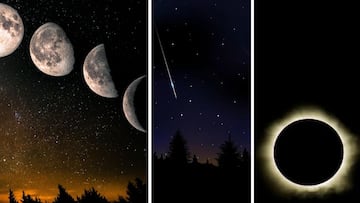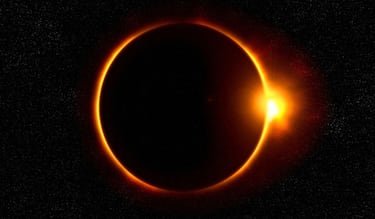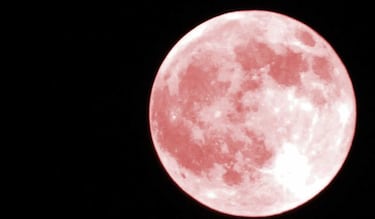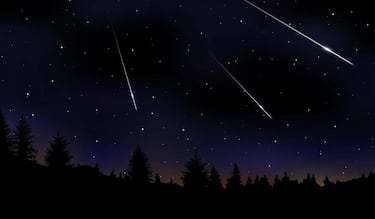Lunar calendar April 2024: lunar phases, solar eclipse, pink full moon and meteor shower
Here is the lunar calendar for April 2024... all you need to know about lunar phases, the pink full moon, the solar eclipse, and more...

April has already begun! Astronomy enthusiasts will enjoy a month full of cosmic events, including lunar phases, a total solar eclipse, a large pink moon, and a meteor shower. Here at AS USA, we will share the complete lunar calendar for 2024 to ensure you don’t miss any exciting events.
Lunar events in April 2024
- Tuesday, April 2, 2024: Last quarter moon with impact on the zodiac sign of Capricorn. | This phase of the Moon can be difficult to observe.
- Monday, April 8, 2024: New moon with impact on the zodiac sign of Aries. | This phenomenon happens when the moon is positioned between the Earth and the Sun, and only half of the moon can be seen.
- Monday, April 15, 2024: Crescent moon with impact on the zodiac sign of Cancer. | It happens when the moon increases its surface area and half of its face appears to be fuller.
- Wednesday, April 24, 2024: Full Moon with impact on the zodiac sign of Scorpio. | It is when the Moon is located behind the Earth with respect to the Sun, allowing the entire lunar face to be seen.
It’s coming! Total solar eclipse
NASA has confirmed that a Total Solar Eclipse will occur on Monday, April 8, 2024. Several states will be in the path of totality, meaning residents will be treated to nearly four and a half minutes of darkness in the middle of the day, as the moon covers the sun completely in these areas. NASA expects it to begin in the Pacific Ocean at 10:30 a.m. and end around 1:32:07 p.m.

Upcoming 2024 Eclipses and meteor Showers
- Monday, April 8, 2024: Total solar eclipse, will be visible in its total phase in Mexico, the Central United States and eastern Canada
- Wednesday, September 18, 2024: Partial lunar eclipse, visible in America, Europe and Africa.
- Wednesday, October 2, 2024: Annular solar eclipse, visible as annular in southern Chile and southern Argentina
- Sunday, May 5, 2024: Eta Aquarid meteor shower.
- Monday, August 12, 2024: Perseid meteor shower.
- Saturday, December 14, 2024: Geminid meteor shower.
When will April’s Pink Moon take place?
The April Full Moon, also known as the Pink Moon, will be visible during the early hours of next Wednesday, April 24, 2024. It will be located in the constellation of Scorpio. The name “Pink Moon” originated from the ancient natives of North America. It was given this name because millions of years ago, when the event illuminated the sky, it coincided with the flowering of the Wild Ground Phlox plant. This wildflower species bloom in the northern hemisphere, announcing the arrival of spring, and the areas in which it grows turn pink.

Don’t forget about the Lyrid Star Shower
Lovers of astronomical phenomena will be able to enjoy the wonderful spectacle of the Lyrid Meteor Shower, which is scheduled to take place from April 16 to 26, 2024. The shower’s peak, with its maximum luminosity, is expected to occur on Monday, April 22. It is anticipated that this year, 18 meteors will be visible per hour.
Related stories
Did you know? Lyrid meteors are actually fragments of comet C/1861 G1 Thatcher, a comet that orbits the Sun once every 415 years.
Every year around this time, the Earth passes through a ring populated with fragments that have broken off from Comet Thatcher. When one of these fragments, known as a meteoroid, enters the Earth’s atmosphere, it burns up due to friction with the air, creating the luminous glow that we know as a meteor or shooting star.


Complete your personal details to comment